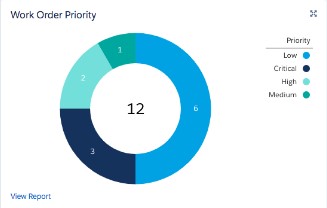Work Orders vs. Service Appointments: These two objects seem the same, but both have distinct roles. Work Orders are defined as work that needs to be performed, and Service Appointment is when and where, representing the visit the technician will make.
Asset tracking & Management: Asset tracking is used to track the information about products that customers use.
Contract Line Items and Entitlements: These pertain to the setup of new entitlements for service level agreements with contract line items.
Schedule and Work Dispatching: Schedule Management plays a key role in Field Service Management. In the Salesforce FSL, the dispatcher console allows you to manage and monitor technicians’ workload from one place in real-time and is available as a map or a Gantt chart.
Operating Hours: This defines allowable times for “when” teams can perform the work and when accounts can be serviced.
Resource Management: This brings together the service technicians’ level of expertise, hourly or job-based capacity, and more.
Service Report output Document: This will generate a service report after completion of the work order. The service report will have all the information related to work orders like customer information, pricing information, product details, and more.










